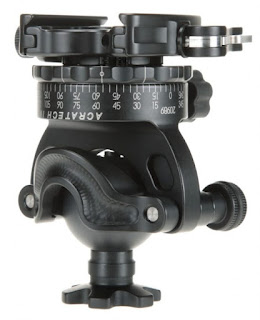Ahead of a talk I'm due to give on digital panorama photography, I thought I would write a short post on some of the technology I use to capture the 'classic' 17x6 format pano.
Although I'm limiting my talk to digital photography, one has to mention the dedicated pano film cameras that are available, eg the Hasselblad XPan, with its 65x24 mm 35mm negative film, and the Fujifilm G617, with a 168x56 mm 120 film negative size.
To achieve the 617 look and maximise the sensor capture size with my 35mm EOS R camera, I make use of several pieces of technology, to maximise shifting, rather than only rotating: a Mamiya 645 35mm, 45mm or 150mm lens, with a Fotodiox shift adapter on my EOS R; or a 24mm TS-E.
I then mount this into a PocketPANO tilt & shift frame with a matched pano rotator head, that ensures the entrance pupil is correctly located:
Adding the two together results in the following arrangement, here shown with a 17mm TS-E and a Sony camera:
Finally, I mount the lens, camera and rotator head on an Acra-Swiss d4 geared head, that is using it as a very expensive levelling base :-)
The above gives me the ability to use the camera in landscape or portrait mode and achieve 617 capture with minimal perspective problems.
As for capture, there is no 'best' way, but one way is to use the following 5 image capture workflow, using both rotation and shift in the same row:
- Centre and level the composition and capture the central image at 0mm shift
- Using the pano head, rotate the camera to the right by 1, 2 or 3 times 15 degree inncrements, ie 15 or 30 or 45 degrees (note this rotation can/should be restricted to 30 degrees if the camera is in portrait orientation) and capture the 2nd image
- Without rotating the camera, shift it by 12mm and capture the third image
- Zero the shift and rotate the camera 15 or 30 or 45 degrees, from the center, in the other direction, and capture the fourth image
- Finally, without rotating the camera, shift by 12mm to capture the fifth image
An alternative to the above is to use shift vertically and rotation horizontally, ie two rows.
The following test shot in my garden, using a 30 degree rotation in landscape orientation, shows the five image landscape orientation set using horizontal shift and rotation:
After pano processing with PTGui, undertaking a little bit of clean up and toning in Lightroom, the image was cropped to the 617 format, resulting in a panorama with 12371x3897 pixels.
As usual I welcome any feedback on this post or any of my posts.


.jpg)






No comments:
Post a Comment